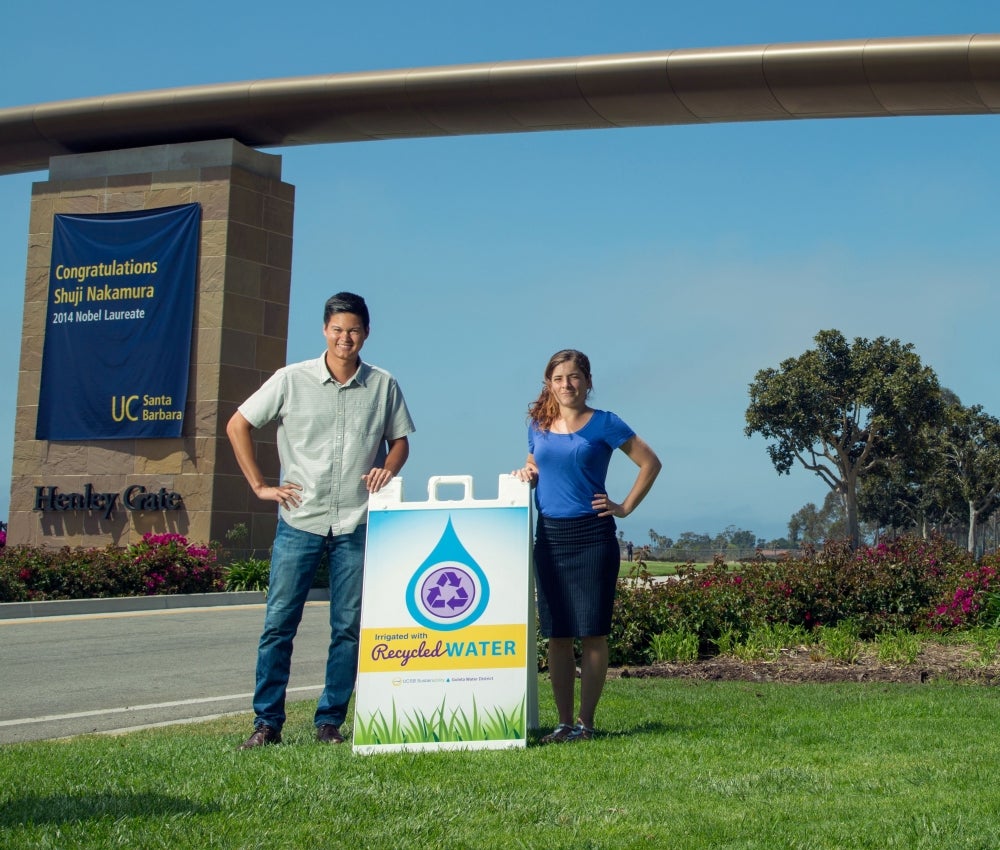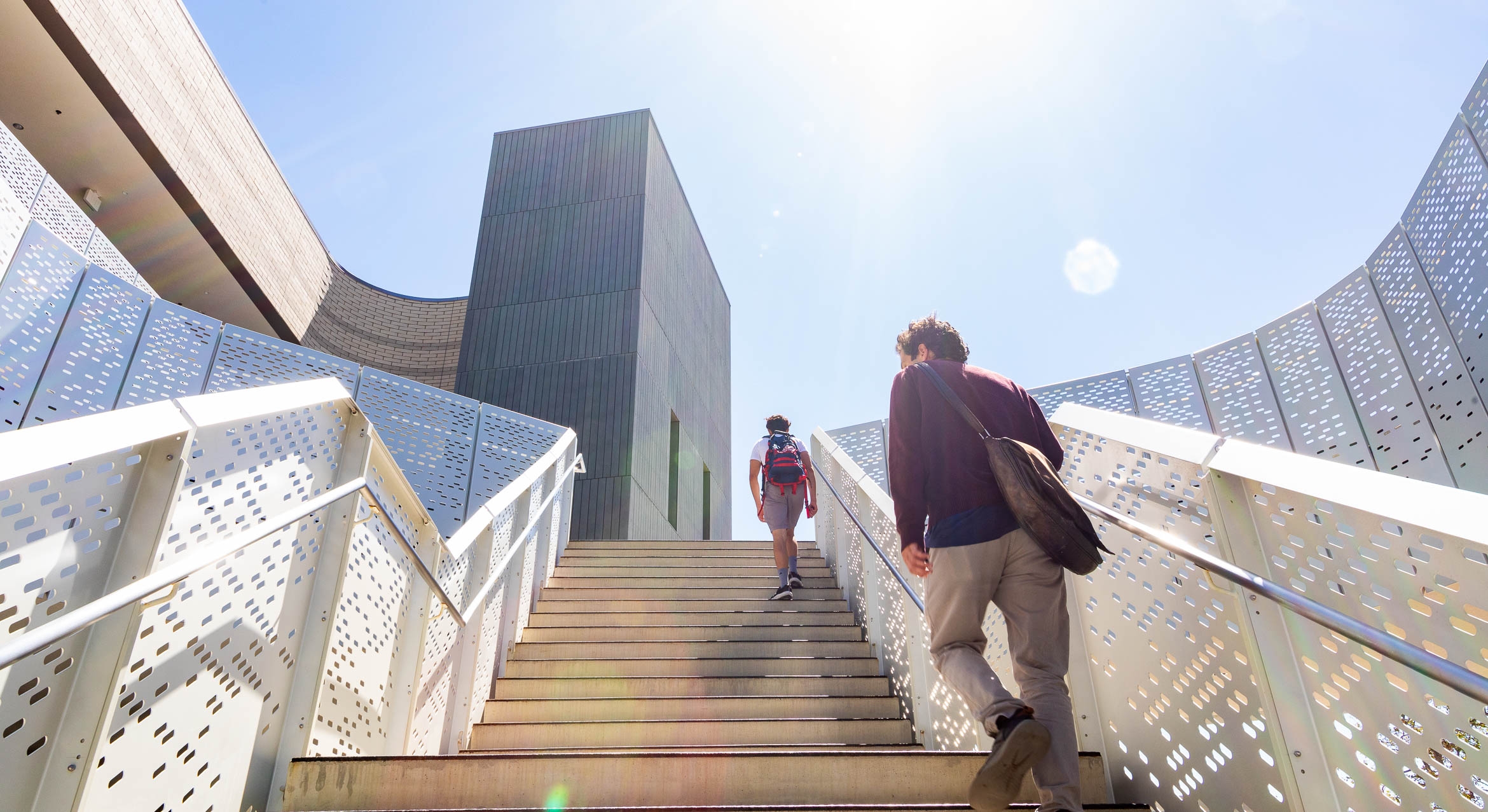Smart on Water
In a show of solidarity with the surrounding community — and in its latest pacesetting push in all things sustainability — UC Santa Barbara is aiming to save more water.
Amid a historic drought in California, urban water districts are being asked to reduce water use in a major way over the next year. Having already achieved a UC mandate to cut consumption 20 percent by the year 2020, UCSB wanted to go even further and, by doing so, to bolster the efforts of its closest neighbors.
After assessing the potential for further water savings and reviewing the requirements of the campus’s neighboring city of Goleta, the campus gave itself a goal to match Goleta’s target: a 12-percent reduction in potable water use by March 2016.
“Goleta Water District has done a phenomenal job in regards to water conservation efforts, and they have recognized the university for doing a good job, so we felt that a 12 percent goal was respective of both our efforts,” said Matt O’Carroll, water, refuse and recycling manager at UCSB. “We think it’s really important for us to stand with our community and do what everybody else is being asked to do.”
To hit the new self-imposed reduction target, UCSB will ramp up on education and outreach aimed at changing behavior around water use, convert a dozen landscapes from potable- to recycled-water irrigation and deploy an innovative new technology to drastically cut water waste in campus labs.
A 12-percent reduction between June 2014 and March 1, 2016 would equate to more than 19 million gallons in saved potable water.
“UCSB has a long history of thoughtful planning and use of resources, and water is no exception,” said Bruce Tiffney, dean of UCSB’s College of Creative Studies and co-chair of the Chancellor’s Sustainability Committee. “The preceding years of effort by staff, faculty and students have already allowed the campus to reduce its potable water use 25 percent. This same planning and attention to detail will permit us to achieve a further 12 percent reduction, by March, 2016, paralleling the goal set by the Goleta Water District.”
Conservation practices have been habit for UCSB for decades — as has getting creative to get the job done. In the last year, for instance, the campus has retrofitted restrooms and hired a preventative maintenance plumber.
By last spring, 90 percent of campus landscapes were already irrigated with reclaimed water; irrigation on the others was either reduced by half, or eliminated altogether. As additional green areas are converted to recycled water, O’Carroll said, that figure could climb even higher.
“Some campuses don’t have an alternative source of water like we do, so we’re making conscious effort to utilize it,” he said. “We’re taking full advantage. On the main campus, still about 10 percent of the landscaping is irrigated with potable water. We are hoping to get up to 98 percent of our landscape being irrigated with recycled water.”
Inside its buildings, the campus has long eyed its many labs as a great place to achieve water savings. And through its unique LabRATS (Laboratory Resources, Advocates, and Teamwork for Sustainability) program, that hope is now coming to fruition.
Assisting researchers in reducing their impact on the environment while also improving safety, encouraging good laboratory management practices, and promoting communication and resource sharing, LabRATS adapt campus recycling, energy management and sustainability practices to the unusual materials used and processes implemented in laboratories.
Primary in their sights: condensers that use a continual stream of chilled water to cool equipment or chemicals. Older models are “single-pass” condensers, meaning the water is used only once. LabRATS is now piloting, in several labs, new condensers that operate on a “closed loop” recirculating system in which water is recycled and reused.
With funding for 85 of the new units, UCSB expects to save 3 percent of its 12-percent goal on that effort alone.
“LabRATS has been making a very conscious and proactive effort to eliminate single-pass condensers in our labs,” O’Carroll said. “This will save a significant amount of water — even with just 85 units. Eventually we’d like to replace all single-pass condensers, campuswide, with closed-loop systems.”
Other potential future improvements include the introduction of recycled water into campus cooling towers, which currently account for about 11 percent of the campus’s total yearly water use — according to O’Carroll, who said that project is in its preliminary stages.
“That would be really important for the campus, but that will be later,” O’Carroll said. “Right now our biggest challenge is how to keep predominantly the same community engaged with the same water conservation ideas. A lot of the reductions we’ve already achieved are the result of our campus community responding to our need to conserve water. They’re doing a fantastic job. We just need to keep it up.
“We saw this as an opportunity for us,” O’Carroll added of the new conservation efforts. “UCSB sees the demand and sees the need for creating this short-term goal. It’s being required of all urban water districts in California, and we want to take part in that.
“Water-wise, our campus is in a comfortable position for a reason,” he said. “We’ve taken a proactive approach to water conservation that started back in the 1990s and we haven’t stopped since. We’ve always been really good at trying to stay ahead of the game. Whatever it takes, we’ll do to help the university and the greater Goleta Valley, to reach our goals and to build a sustainable and resilient future for the community.”





